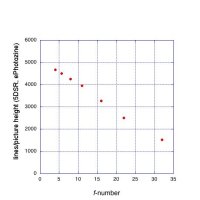squareroot(32.5/24) = 1.16 - so a 16% improvement in linear resolution. Is that worth a new image size, smaller photosites, the need to open you aperture a little bit more to exploit the resolution gain, record more lens aberrations in you images instead of more detail. I don't know. [...]
Because video is not as good compared to other companies offers it may have to do with a ~ 4655 x 6982 pixel sensor layout
Might allow for some internal 6k video readout with a good margin for digital IS and downscaling to 4k. I doubt we'll see that though, ubless these crop bodies are priced closer to the R than the RP.
If you want to argue that just from a rwlative point of view the increase doesn't natter, you could do so for any recent Canon release. The resolution increase was always very similar, if you just look at the relative numbers:
24 to 32 = 1.33 (80D to 90D?)
18 to 24 = 1.33 (60D to 80D)
22 to 30 = 1,36 (5D III to 5D IV)
20 to 26 = 1,30 (6D to 6D II)
The sensor of the 70D/7D II doesn't match that patteen, neither does the 1DX II. I guess beeing the first dual pixel sensor and prioritzing high fps over resolution will have something to do with it.
Looks to me like Canon thinks a just over 1.3 increase in resolution is enough to benefit the market, seeing as it is the increase they went for with all but their niche cameras. I certainly appreciate the difference between my 600D (T3i) and 80D.
You can also look at higher MP as bringing the point closer, where diffraction handles the job of the low pass filter, making it truly unneccessary.




